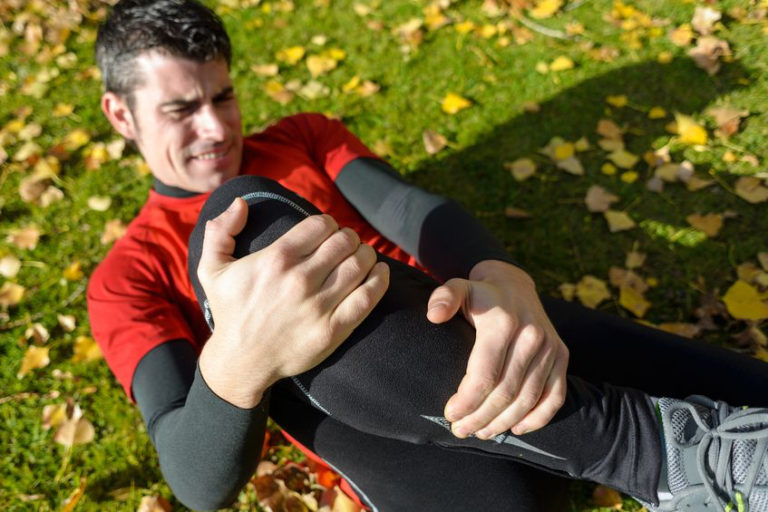Understanding Torn Meniscus Recovery

A torn meniscus is a common injury that can happen to anyone, especially athletes. The meniscus is a C-shaped piece of cartilage that acts as a shock absorber between your thighbone and shinbone. When it tears, it can cause pain, swelling, and difficulty moving your knee.
Types of Meniscus Tears and Severity
Meniscus tears can be classified by their location and severity.
- Horizontal tear: A horizontal tear occurs across the width of the meniscus, like a slice.
- Vertical tear: A vertical tear runs up and down the meniscus, like a crack.
- Radial tear: A radial tear is a combination of a horizontal and vertical tear, resembling a spoke in a wheel.
- Flapper tear: A flapper tear is a large, unstable tear that can detach a portion of the meniscus.
The severity of a meniscus tear is often described as mild, moderate, or severe.
- Mild tears: Involve a small portion of the meniscus and may not require surgery.
- Moderate tears: Affect a larger portion of the meniscus and may require surgery, but often respond well to conservative treatment.
- Severe tears: Involve a significant portion of the meniscus, usually requiring surgery.
Factors Influencing Recovery Time
Several factors can influence the recovery time for a torn meniscus, including:
- Age: Younger individuals tend to recover faster than older individuals due to their better healing capabilities.
- Activity level: Individuals who are very active may experience a longer recovery time due to the higher stress placed on the knee.
- Tear location: Tears in certain areas of the meniscus, such as the outer edge, may heal better than tears in the inner edge.
- Treatment method: The type of treatment received, whether conservative or surgical, will affect the recovery time.
Typical Recovery Timeline
The recovery timeline for a torn meniscus varies depending on the type of tear and the treatment method.
- Conservative treatment: For mild tears, conservative treatment like rest, ice, compression, and elevation (RICE) can be effective. Recovery may take a few weeks to a few months.
- Surgery: For moderate to severe tears, surgery may be required to repair or remove the torn portion of the meniscus. Recovery can take several months, with a gradual return to activity.
It’s important to note that these are just general estimates, and individual recovery times can vary.
Treatment Options for Torn Meniscus

So, you’ve got a torn meniscus. Bummer, right? But don’t panic. There are a bunch of treatment options out there, so we’ll go over the most common ones and help you figure out what might be best for you.
Non-Surgical Treatment
Non-surgical treatment is often the first line of defense for a torn meniscus. It’s usually the go-to option for people with less severe tears or those who don’t have a lot of pain or instability. The main goal of non-surgical treatment is to reduce pain and inflammation, allowing your knee to heal naturally.
- RICE (Rest, Ice, Compression, Elevation): This classic treatment method helps reduce swelling and inflammation.
- Over-the-counter pain relievers: Ibuprofen or naproxen can help manage pain and inflammation.
- Physical therapy: A physical therapist can teach you exercises to strengthen the muscles around your knee, improve flexibility, and increase range of motion.
- Bracing: A knee brace can provide support and stability, reducing stress on the injured meniscus.
- Corticosteroid injections: Injections can help reduce inflammation, but they’re not a long-term solution.
Surgical Treatment
If non-surgical treatment doesn’t work, or if your tear is severe, surgery might be the best option. Surgery can be used to repair or remove the torn portion of the meniscus.
Types of Meniscus Surgery
- Meniscectomy: This involves removing the torn portion of the meniscus. It’s often done for tears that are too damaged to repair.
- Meniscus repair: This involves stitching the torn meniscus back together. It’s typically used for tears that are relatively fresh and have good blood supply.
Comparing Treatment Options, Torn meniscus recovery time
Here’s a table comparing the different treatment options, including their typical recovery periods, risks, and benefits:
| Treatment Option | Typical Recovery Period | Risks | Benefits |
|—|—|—|—|
| Non-Surgical Treatment | 4-6 weeks | May not be effective for severe tears. | Less invasive, shorter recovery time, no surgery. |
| Meniscectomy | 6-8 weeks | Increased risk of osteoarthritis in the long term. | Effective for severe tears, can be done arthroscopically. |
| Meniscus Repair | 8-12 weeks | May not be successful for all tears. | Preserves the meniscus, may reduce risk of osteoarthritis. |
Recovery Process and Rehabilitation: Torn Meniscus Recovery Time

Recovering from a torn meniscus involves a comprehensive approach that combines rest, rehabilitation, and, in some cases, surgery. The goal of the recovery process is to restore your knee’s function, strength, and stability.
Initial Recovery and RICE
The first few days after a meniscus tear are crucial for reducing inflammation and pain. The RICE method, which stands for rest, ice, compression, and elevation, is a standard approach during this phase.
- Rest: Avoid activities that put stress on your knee, such as running, jumping, or heavy lifting. This allows the injured tissue to begin healing.
- Ice: Apply ice packs to the injured area for 15-20 minutes at a time, several times a day. This helps reduce swelling and inflammation.
- Compression: Use a compression bandage or brace to help minimize swelling and provide support.
- Elevation: Keep your leg elevated above your heart whenever possible. This helps drain excess fluid from the injured area.
Physical Therapy and Rehabilitation Exercises
Once the initial inflammation subsides, physical therapy plays a vital role in your recovery. A physical therapist will create a personalized exercise program to strengthen your muscles, improve range of motion, and restore stability to your knee.
- Range of Motion Exercises: These exercises help restore the full movement of your knee joint. Examples include knee flexion, extension, and side-to-side movements.
- Strengthening Exercises: These exercises target the muscles surrounding your knee, including the quadriceps, hamstrings, and calf muscles. Examples include leg presses, hamstring curls, and calf raises.
- Balance and Proprioception Exercises: These exercises help improve your balance and coordination, which are essential for returning to activities that involve quick movements or changes in direction. Examples include standing on one leg, walking on uneven surfaces, and performing balance drills.
- Functional Exercises: As your knee strength and stability improve, your physical therapist will introduce functional exercises that mimic the movements you need for everyday activities and sports. Examples include walking, jogging, jumping, and pivoting.
Potential Complications and Prevention
While most people recover well from a torn meniscus, certain complications can arise during the recovery process.
- Delayed Healing: If the tear is significant or if you don’t follow your physical therapist’s instructions, healing can be delayed. To prevent this, be sure to follow your exercise program diligently and avoid putting too much stress on your knee too soon.
- Stiffness: If you don’t regain full range of motion in your knee, stiffness can develop. Regular stretching and range of motion exercises can help prevent stiffness.
- Re-injury: It’s important to listen to your body and avoid activities that cause pain or discomfort. Pushing yourself too hard too soon can lead to a re-injury.
Torn meniscus recovery time – Recovering from a torn meniscus can be a challenging journey, with timelines varying depending on the severity of the tear and individual factors. It’s important to remember that healing takes time, and patience is key. Sometimes, injuries like a gibbs injury , which affects the hand, can seem unrelated but can also impact your recovery from a torn meniscus, as it may limit your ability to engage in certain exercises or activities.
With proper care and physical therapy, you can work towards a full recovery and regain your mobility and strength.
Recovering from a torn meniscus can be a challenging journey, both physically and emotionally. It’s important to remember that every individual’s healing process is unique, and there’s no one-size-fits-all timeline. For insights into the dedication and resilience required for a successful recovery, you might find inspiration in jj mccarthy news , where stories of athletes overcoming adversity are often highlighted.
Ultimately, patience, perseverance, and a positive mindset are key to navigating the path back to full functionality after a torn meniscus.
